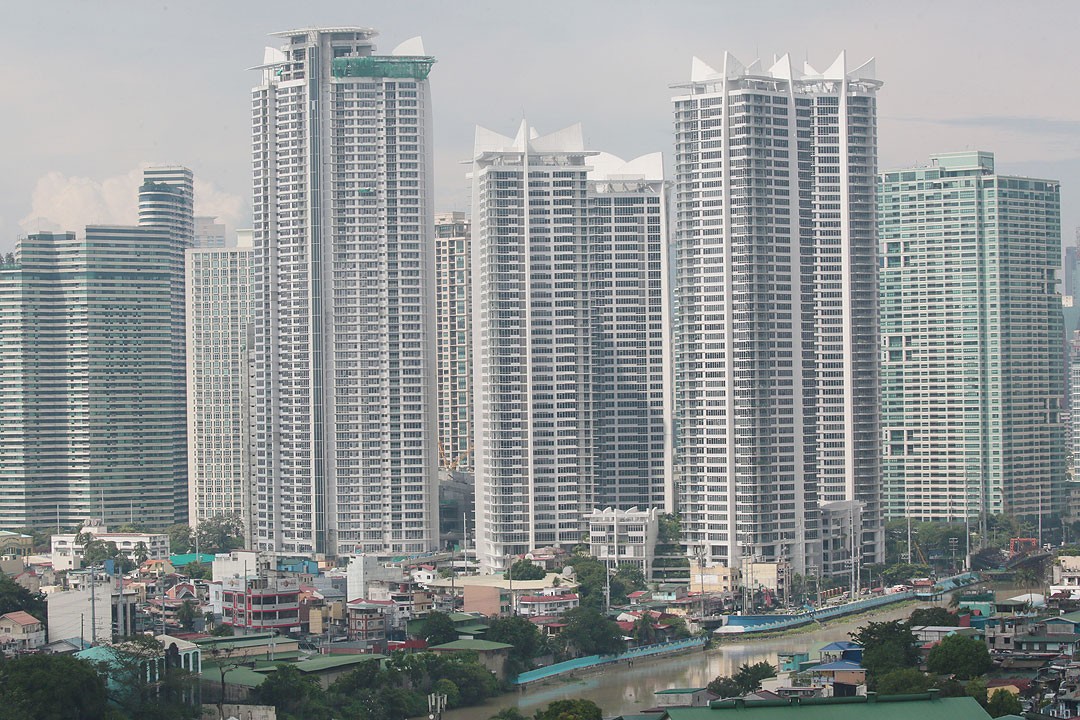High-rise condominiums to address PHL housing crisis, urban planners say

By Beatriz Marie D. Cruz, Reporter
VERTICAL HOUSING helps ensure more affordable housing options for the urban poor, while offsetting high land costs, according to urban planners.
“From a larger urban perspective, vertical housing makes the provision of urban services more cost-effective,” Joel L. Luna, principal at Joel Luna Planning and Design, said in an e-mail.
“Bringing more people together in a compact land area reduces the per capita cost of providing utilities, infrastructure, roads and other services compared with a sprawling development,” he added.
At a recent Senate hearing, Senator Cynthia A. Villar questioned the Department of Human Settlements and Urban Development’s plan to set up more medium-rise condominiums, saying these are only for the middle class.
“Why are you prioritizing the 3.2 million housing [units] for the middle class when your mandate is to help the poor and the homeless?” she told the Nov. 12 hearing, citing the need for more affordable housing options for the poor.
The Pambansang Pabahay Para sa Pilipino Housing Program, a flagship project of the Marcos administration, seeks to build 3.2 million housing units by 2028.
The program will focus on building in-city, high-density/vertical housing units using idle state lands and backed by government financial institutions.
Felino A. Palafox, Jr., president of Palafox Architecture Group, Inc., said vertical housing in urban areas would give the poor access to basic needs such as work and transportation.
“The urban poor should live close to their places of work, the schooling of their children, and public transit,” he said via telephone.
He added that vertical housing is more environment-friendly than horizontal housing units.
“When you have a large single-family home in the middle of the city, you’ll have a higher carbon footprint because you’re arrogating to yourself prime urban land resources,” he said.
Compared with traditional housing models, medium- and high-rise buildings also help maximize land space and reduce piping costs, according to urban planner and landscape architect Paulo G. Alcazaren.
“The key is the cost of land. If the land is expensive, then building up is the only way to recover the cost,” he said in an e-mail.
Vertical housing is also seen as the more practical choice in urban areas, where limited space and high demand drive up land prices and construction costs, according to Mr. Luna.
“In urban centers where high demand and scarcity of space drives unit land prices to levels that far exceed the unit cost of construction, building vertically would be the practical way to create new supply of space,” he said.
“At the fringes of urban centers (peri-urban, suburban or rural areas) where land is more abundant and where land values remain lower than the cost of building vertically, horizontal development is more economically practical,” he added.
However, Mr. Luna cited the need for a “multi-dimensional” approach to solving the country’s housing problem, noting that it is an issue of poverty.
“Why are they (urban poor) migrating to cities? Where did they come from and what circumstances made them leave their place of origin?” he asked.
Addressing issues on livelihood and employment, rural poverty and land ownership, among others, are as equally important as the housing crisis.
“The type of building is just one facet of a very complex issue,” Mr. Luna said.
To ensure affordable vertical housing options, the government should allocate more state land in urban areas to public housing, and push for subsidies or tax incentives, Mr. Luna said.
Building more vertical housing units would also help lower costs, Mr. Alcazaren said. “It’s economies of scale. If we need to build six million units, then the projection for costs goes down.”
Self-help housing, which allows beneficiaries to participate in construction, provides skill training and employment opportunities, Mr. Luna said. Housing developers should also allow livelihood opportunities in the area such as small businesses, childcare services and community farming.
Developers can use more locally available materials, build more energy- and water-efficient buildings through renewable sources of power and rainwater harvesting, Mr. Luna said.
Source: https://www.bworldonline.com/property/2024/12/24/643146/high-rise-condominiums-to-address-phl-housing-crisis-urban-planners-say/?fbclid=IwY2xjawHbIkpleHRuA2FlbQIxMAABHbM4YPoaic7X-5N8mrClKSPKx7CpKAQbPRDxYUBCACgjJdh6GbLMjcwmKw_aem_NOpGkGt-_WNCesQESzk1jg










